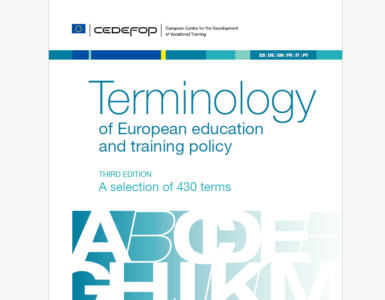This generation of student is different. The Millennial, and soon to be Generation Z, student has grown up in an educational (and social) system that provides on-demand answers. A teacher-centered classroom, one that primarily focuses on lecture and imparting information, is not the most effective approach. Therefore, the trend in education is to migrate to a student-centered model, which allows for active learning and skills development. More importantly, this model creates an environment of accountability and ownership in the learning process for the student.
In creating the student-centered model, this type of learner embraces and needs technology including video, as a part of their learning environment. The current generation has grown up where technology is used in the classroom, and for this reason assessments, whether implemented in or out of the classroom, must utilize this platform.
Why do instructors not effectively utilize the incorporation of assessments in the classroom?
Professors are likely to resist the incorporation of assessments for one of three reasons; (1) the belief they are providing immediate feedback on a student’s understanding of the material; (2); providing more assessments equates to “teaching to the test” (a pejorative phrase which suggests a remedial type of learning); and (3) the belief they are teaching a class that does not easily translate into providing more assessments. Point one is addressed below in more detail. To the last two points, I hope to show that given the variety of assessments that could be incorporated into the classroom, renders these points moot, at best.
To the first point, many professors may believe they are not engaging in a teacher-centered model, since they are not merely lecturing. Take for example the traditional law school classroom that engages in the Socratic Method. The Socratic Method is not merely a lecture tool. This method engages the student in the sense that the professor acts as a guide and responds to student questions by requiring the student to answer their own question. The typical back-and-forth will get the student to think critically about the assigned material. An effective professor will navigate the student in such a way, that the question originally posed by the student will ultimately be answered by the student. The benefit of this exchange pre-supposes two things; (1) that the professor is effectively applying the model; and (2) that all students in the classroom will stay engaged in this one-on-one, and will learn from this process. While the latter may have been true in a day when technology was not so prevalent in the classroom, it is hard to make this argument, today. Many professors allow their students to use laptops in the classroom. The lure of disengaging, while the professor has this exchange with one student in the classroom, is far too tempting for this generation. So, while one student may surely be involved in a higher level of thinking, this comes at the expense of losing the rest of the classroom.

Why this learner needs assessments
This generation of student learns best through multiple assessments. One reason for this is the attention span is shorter. A classroom that primarily focuses on a lecture format will not effectively engage most of the students. One study suggests that in order to keep students actively focused in the classroom, a professor should introduce a new thing every six minutes.
This is not to suggest that a new topic must be introduced so frequently; but when discussing one topic, introducing a new slide, exercise, or activity is essential to class engagement. Ideally, a learning environment that involves less lecture and more collaboration, with peers, is preferred.
How to incorporate assessments in the classroom
The key to incorporating assessments into the classroom is to start small. Students do not need different types of assessments, but they do need multiple assessments, even if it is presented in the same format. For this reason, an instructor need not concern themselves with the variety of available assessments. In fact, this allows for the instructor to implement the type of assessment that either suits their needs or works best with the structure of the class. For example, assessment questions could be in the form of basic recall, conceptual understanding, application, procedural, or prediction questions, open-ended questions or multiple choice. These assessments could be answered on an individual basis, or structure for group exercises. Additionally, and particularly for an instructor that has taught a course for a number of years, it may be wise to start with one or two sub-topics initially. In the future, more sub-topic lectures can be amended to add other assessments.
Finally, when adding assessments, the use of a multi-faceted platform is highly recommended. The benefits of such a platform is that it allows for the use of a variety of assessment tools including those that are video-based. Additionally, it is delivered in a format that students want. Paper assessments can achieve the same goal, but a technology-based platform is what is expected by this type of learner. An added benefit for the professor is that it provides immediate grading and feedback (for both the professor and the students)

Author
Amanda E. Compton is the Director of Bar Support and Instructor at Antonin Scalia Law School, George Mason University, Virginia, U.S.A.
Prof. Compton utilizes a Echo360, a multi-faceted platform, which is ideal for assessments.
Amanda E. Compton is the Director of Bar Support and Instructor at Antonin Scalia Law School, George Mason University, Virginia, U.S.A. Prof. Compton utilizes a Echo360, a multi-faceted platform, which is ideal for assessments.














